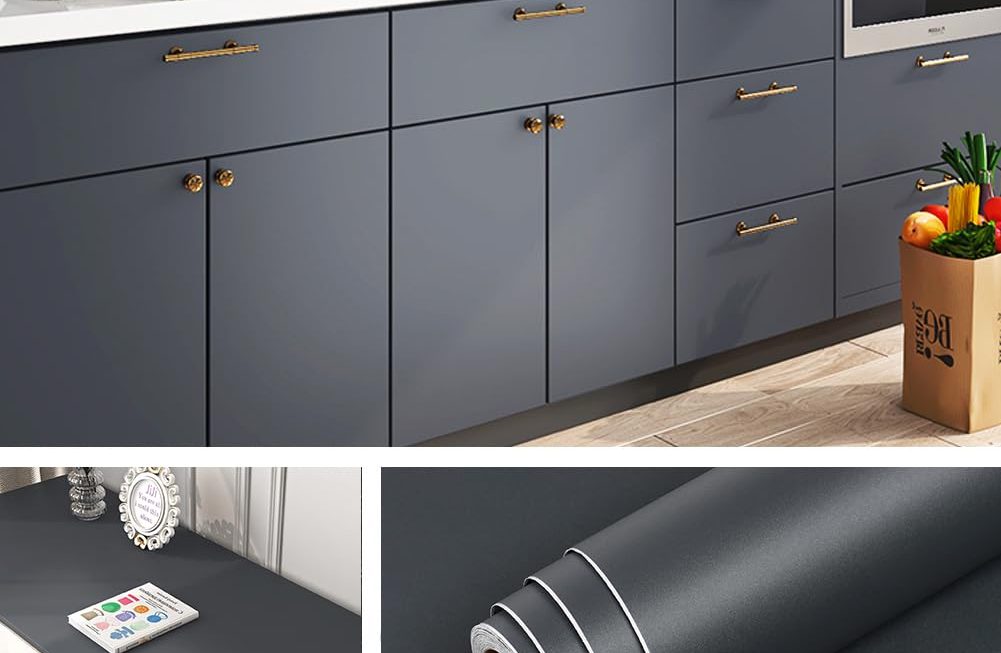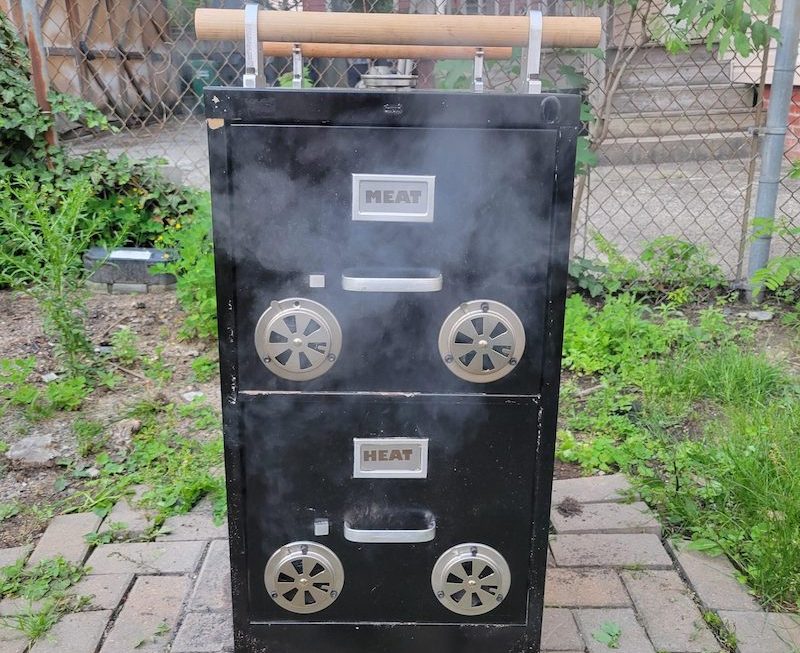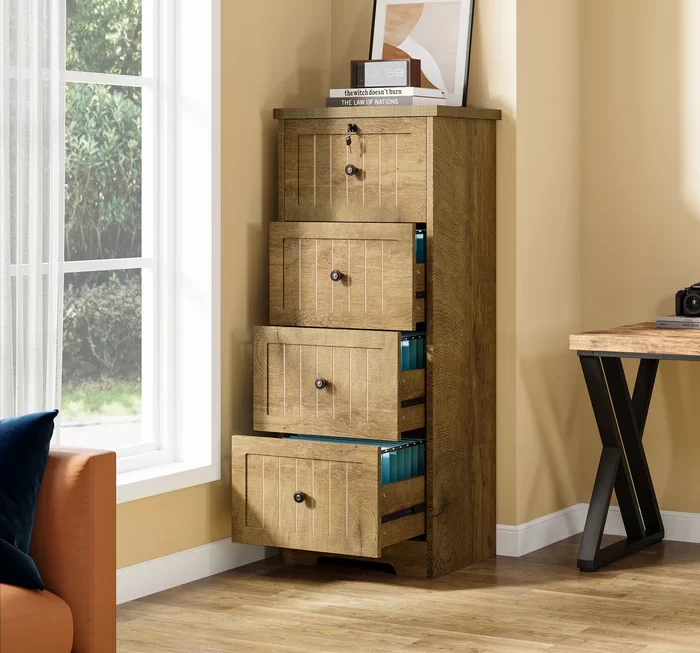Introduction
Cabinets are an essential element of any home, providing much-needed storage and organization. However, they can often appear outdated or worn over time. A great way to breathe new life into your cabinets is by using cabinet covers. In this guide, we will explore everything you need to know about cabinet covers, from their different types and materials to how to install them and where to find the best options.
Part 1: Types of Cabinet Covers
Level 1: Introduction to Different Types
Cabinet covers come in various types, including adhesive, peel-and-stick, and temporary fabric covers. These options allow you to update the look of your cabinets without the need for a complete renovation.
Level 2: Adhesive Covers
Adhesive covers are a popular choice for revamping cabinets, as they are easy to apply and come in a wide range of patterns and colors. They are made of durable vinyl or PVC material and can be easily removed without causing damage to the cabinet surface.
Level 3: Peel-and-Stick Covers
Similar to adhesive covers, peel-and-stick covers offer a convenient and mess-free way to update your cabinets. They are often made of self-adhesive vinyl or wallpaper material, providing a quick and affordable solution for transforming your space.
Part 2: Materials for Cabinet Covers
Level 1: Introduction to Different Materials
Cabinet covers can be made from various materials, including vinyl, PVC, wallpaper, and fabric. Each material offers different benefits in terms of durability, ease of maintenance, and design options.
Level 2: Vinyl and PVC
Vinyl and PVC are commonly used materials for cabinet covers due to their durability and versatility. They are resistant to moisture and can be easily wiped clean, making them a practical choice for high-traffic areas such as kitchens and bathrooms.
Level 3: Wallpaper and Fabric
For a more unique and personalized look, wallpaper and fabric covers can be used to add texture and pattern to your cabinets. These materials offer a wide range of design options, allowing you to create a custom look that reflects your personal style.
Part 3: Installing Cabinet Covers
Level 1: Preparation and Tools
Before installing cabinet covers, it is essential to prepare the surface by cleaning and sanding any imperfections. You will also need basic tools such as a utility knife, ruler, and smoothing tool to ensure a smooth and seamless application.
Level 2: Adhesive Covers
To install adhesive covers, simply measure and cut the material to fit the cabinet door, then peel off the backing and carefully apply the cover, smoothing out any air bubbles as you go.
Level 3: Peel-and-Stick Covers
Peel-and-stick covers can be applied in a similar manner to adhesive covers, following the same steps of measuring, cutting, and smoothing out any imperfections. The key is to take your time and ensure the cover is applied evenly for a professional finish.
Part 4: Styling with Cabinet Covers
Level 1: Design and Color Options
Cabinet covers offer endless design and color options to suit any style or aesthetic. From classic woodgrain and marble patterns to bold colors and geometric prints, there is a cover to complement any decor.
Level 2: Creating Focal Points
Using cabinet covers to create focal points in a room can help draw attention to particular areas and add visual interest. Consider using a bold and eye-catching cover on a single cabinet or a set of upper cabinets to create a striking design feature.
Level 3: Coordinating with Other Elements
When choosing cabinet covers, it’s essential to consider how they will coordinate with other elements in the room, such as countertops, backsplashes, and flooring. Selecting cohesive colors and patterns will create a cohesive and harmonious look throughout the space.
Part 5: Where to Find the Best Cabinet Covers
Level 1: Online Retailers
Many online retailers offer a wide selection of cabinet covers, making it easy to compare different styles, materials, and prices from the comfort of your own home. Look for retailers that provide detailed product descriptions and customer reviews for a better shopping experience.
Level 2: Home Improvement Stores
Local home improvement stores often carry a variety of cabinet covers, allowing you to browse in person and get a feel for the material and design options. You can also seek advice from the store staff on the best covers for your specific needs and budget.
Part 6: The Benefits of Custom Cabinet Covers
Custom cabinet covers offer a range of benefits beyond just protecting your cabinets from dust and damage. The most obvious benefit is the aesthetic improvement they provide. By choosing a custom cover, you can completely transform the look of your cabinets, giving them a fresh and updated appearance. Custom covers come in a variety of colors, patterns, and materials, allowing you to match them to your existing decor or create a whole new look for your space.
In addition to their visual appeal, custom cabinet covers also offer practical benefits. They can help to extend the life of your cabinets by protecting them from scratches, dents, and other types of damage. This is particularly important for high-traffic areas such as the kitchen. Custom covers can also make cleaning and maintenance easier, as they can be easily removed and machine washed.
Another benefit of custom cabinet covers is their versatility. They can be easily customized to fit any size or shape of cabinet, making them suitable for a wide range of applications. Whether you have a standard set of kitchen cabinets or a custom-built storage unit, custom covers can be tailored to fit perfectly. This versatility also extends to the material options available, with choices ranging from durable vinyl to luxurious fabrics.
Overall, custom cabinet covers offer a great way to enhance the appearance and functionality of your cabinets while providing essential protection. With their versatility, durability, and aesthetic appeal, they are a practical and stylish addition to any home.
Part 7: How to Choose the Right Cabinet Cover Material
When it comes to choosing a cabinet cover, one of the most important factors to consider is the material. The material of the cover will determine its durability, appearance, and ease of cleaning, so it’s essential to choose the right option for your needs. Here are some popular materials to consider:
Vinyl: Vinyl cabinet covers are a durable and affordable option that is easy to clean and maintain. They are resistant to water and stains, making them a practical choice for kitchens and bathrooms. Vinyl covers come in a wide range of colors and patterns, allowing you to easily customize the look of your cabinets.
Fabric: Fabric cabinet covers offer a soft and luxurious option for covering your cabinets. They come in a variety of materials, including cotton, linen, and velvet, allowing you to create a custom look for your space. Fabric covers are machine washable, making them easy to clean and maintain.
Wood: Wood cabinet covers provide a natural and rustic option for covering your cabinets. They can be stained or painted to match your existing decor and offer a durable and long-lasting solution. Wood covers are ideal for adding warmth and character to your space.
Metal: Metal cabinet covers offer a modern and industrial look for your cabinets. They are durable and resistant to water and stains, making them an ideal option for high-traffic areas. Metal covers can be customized with different finishes, such as brushed or polished, to create a unique look for your cabinets.
Overall, the right cabinet cover material will depend on your aesthetic preferences, the level of durability you require, and your maintenance needs. By carefully considering these factors, you can choose the perfect material to enhance the look and functionality of your cabinets.
Part 8: Tips for Installing Cabinet Covers
Once you’ve chosen the perfect cabinet cover for your space, the next step is to install it properly. Here are some tips for installing cabinet covers to ensure a flawless finish:
- Measure accurately: Before ordering your cabinet cover, take accurate measurements of the cabinets you want to cover. Double-check your measurements to ensure the cover will fit perfectly.
- Clean the surface: Before applying the cover, make sure the surface of the cabinets is clean and free from dust and debris. This will ensure the cover adheres properly and looks smooth and neat.
- Use a squeegee: When applying the cabinet cover, use a squeegee to smooth out any air bubbles. Work from the center outwards, pressing out any air pockets as you go.
- Trim carefully: If your cover is slightly larger than your cabinets, carefully trim any excess material with a sharp utility knife. Take your time to ensure clean edges and a professional finish.
- Consider professional installation: If you’re not confident in your DIY skills, consider hiring a professional to install your cabinet covers. A professional installer can ensure a flawless finish and save you time and effort.
By following these tips, you can ensure your cabinet covers are enhancing the look and functionality of your cabinets. Whether you choose vinyl, fabric, wood, or metal covers, proper installation is key to achieving the desired result.
Conclusion
Cabinet covers are a versatile and affordable way to update the look of your cabinets, whether you are looking to add a pop of color, texture, or pattern to your space. With the variety of types and materials available, as well as the ease of installation, cabinet covers offer a practical and stylish solution for transforming your home. By following this guide and exploring different options, you can find the perfect cabinet covers to elevate your space and express your personal style.






